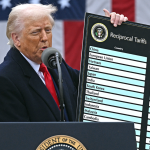Have you ever wondered if small savings can create big wealth? The answer is a powerful yes—thanks to the magic of Systematic Investment Plans (SIPs). By investing just ₹100 daily (that’s ₹3,000 per month), you can potentially build a ₹1 Crore portfolio over time.
Let’s see how it works.
🌱 What is a SIP (Systematic Investment Plan)?
A SIP is an easy way to invest regularly in mutual funds. Instead of investing a lump sum, you invest a fixed amount every month, helping you:
- Build the habit of disciplined investing
- Benefit from rupee cost averaging
- Take advantage of compounding returns
💡 The ₹100 Daily Example: How to Reach ₹1 Crore
| Daily Savings | Monthly SIP Amount | Expected Annual Return (CAGR) | Time to Reach ₹1 Crore |
|---|---|---|---|
| ₹100 | ₹3,000 | 12% (average equity MF return) | Approx. 28–30 years |
👉 Saving ₹100 per day = ₹3,000 per month SIP.
👉 Over 30 years @12% annual returns = ₹1+ Crore.
✅ You invest a total of ₹10.8 lakhs over 30 years.
✅ You earn ₹90+ lakhs from compounding.
Types of SIP Based on Frequency:
- Daily SIP:
- Investment happens every market day.
- Suitable for those who want ultra-consistent investing habits.
- Weekly SIP:
- Investment is made once every week.
- Useful for people with weekly income or freelance work.
- Monthly SIP:
- Most popular and recommended.
- Investment happens once every month—aligned with salaries and bills.
- Quarterly SIP:
- Investment happens every 3 months.
- Suitable for those who prefer longer intervals.
👉 Example:
If you choose Daily SIP with ₹100/day → ₹3,000/month.
If you choose Monthly SIP → Simply set up ₹3,000 SIP.
Note: The frequency doesn’t change the long-term wealth; the key is consistency + time.
🚀 Why SIP is the Smart Choice for This Goal:
- Affordable: Start with as low as ₹500 per month in most funds.
- Flexible: Increase or stop anytime without penalty.
- Compounding: Helps small investments grow exponentially over time.
- Peace of Mind: No need to time the market or worry about volatility.
📈 Real Example:
- Investment: ₹3,000/month
- Years: 30 years
- Returns: 12%
- Result: ₹1.05 Crore (approx.)
If you increase your SIP amount gradually as your income grows, you can reach this milestone even sooner!
🔑 Key Takeaways:
- You don’t need to start big—small daily savings matter.
- Time and consistency are more important than timing the market.
- SIPs make investing accessible for everyone.
Important Terms to Understand
Rupee Cost Averaging (RCA) Explained (Indian Context)
Rupee Cost Averaging (RCA) is an investment strategy where you invest a fixed amount of money regularly (e.g., monthly or quarterly) in a particular investment, regardless of the asset’s price at that time. This is most commonly applied in Systematic Investment Plans in Mutual Funds.
How It Works:
- You invest ₹1,000 every month into a mutual fund.
- Some months, the NAV (Net Asset Value) of the fund is high, so you buy fewer units.
- Some months, the NAV is low, so you buy more units.
- Over time, this smoothens out the effect of market ups and downs.
Example:
| Month | Investment (₹) | NAV (₹) | Units Bought |
|---|---|---|---|
| Jan | ₹1,000 | ₹50 | 20.00 units |
| Feb | ₹1,000 | ₹40 | 25.00 units |
| Mar | ₹1,000 | ₹25 | 40.00 units |
| Apr | ₹1,000 | ₹50 | 20.00 units |
- Total Investment: ₹4,000
- Total Units Bought: 105 units
- Average Cost per Unit: ₹38.09 (Total ₹4,000 ÷ 105 units)
This average is lower than some high NAV months (₹50 in Jan and Apr).
Key Benefits of Rupee Cost Averaging:
✅ Removes the need to time the market
✅ Helps manage market volatility
✅ Leads to lower average cost per unit over time
✅ Encourages regular, disciplined investing
Best Use Cases:
- Ideal for long-term goals like retirement, education, or buying a house.
- Works well with equity mutual funds where markets are naturally volatile.
Important Considerations:
- RCA doesn’t guarantee profits or protect against losses in a declining market.
- Works best when combined with long-term investment horizons.
In short:
Rupee Cost Averaging helps investors avoid the risk of investing a large sum at the wrong time by spreading out investments regularly and taking advantage of market dips automatically.
Final Thought:
Your ₹100 spent on a coffee or snack today could be worth ₹1 Crore tomorrow—all you need is consistency and patience. Start your SIP journey today and let compounding work its magic.
Let me know in the comment section what are your thoughts or if you have any questions or suggestions.
Open Demat account using:
Upstox: https://upstox.onelink.me/0H1s/2QBH4Y
Zerodha: https://zerodha.com/open-account?c=UI9061
FundsIndia:https://www.fundsindia.com/registration/signup?referrer=14c986bdd27841eabe42ce2aaa37815b



Pingback: The Ultimate Guide to Personal Finance in India (2025 Edition) - Wealthy Wisdom